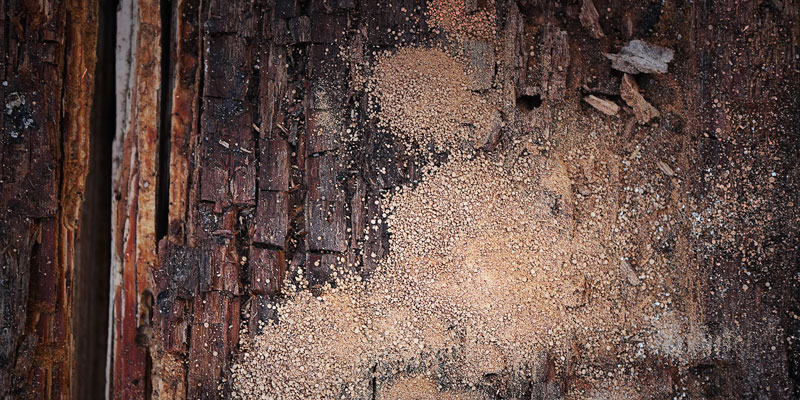Identify 3 Types of Wood Rot
Wood rot occurs when wood in a structure becomes decayed from moisture in wood, which leads to the growth of fungus. Wood rot can cause a variety of issues, including serious structural damage and costly repairs. The most common types of wood decay fungi are brown rot, white rot, and soft rot. Learn more about the three different types of wood rot and how to spot them.

Brown Rot
Brown rot occurs when a certain type of fungus gets into wood and breaks down the wood's cellulose. Over time, this leads to cracks in the wood, and eventually, the wood will split. Brown rot is sometimes referred to as dry rot because wood that is infected winds up becoming dried out and crumbly. The term "dry rot" is not very accurate, given that moisture causes dry/brown rot. Either way, look out for the parched-looking wood.
White Rot
Like brown rot, white rot damages the cellulose in wood. It also damages wood's lignin, which causes wood to have white spots or, in more advanced cases, a sickly pale color throughout. Additionally, wood infected with white rot becomes soft and/or spongy to the touch. White rot is the most aggressive of all three types of rot, with decomposition occurring quickly once the wood becomes infected. Interestingly, some white rot fungi are actually edible, most notably the Shiitake mushroom. But don't go around just eating anything off the decomposing wood!
Soft Rot
Soft rot is the most uncommon type of wood rot and is usually found in places that are too hot, too cold, or too damp for brown or white rot. Decomposition from soft rot occurs at a slower pace than the other two types of fungi, and it often starts deep within the inner cavities of the wood.
When to Call A Professional
To minimize any damage caused by wood rot, it is necessary to identify and treat a suspected problem as soon as possible. Wood rot is not a condition that can be resolved without treatment, and it'd be unwise to paint it. In fact, the longer the rot continues to grow without treatment, the worse the damage will be in the end. If you suspect a structure has wood rot, be sure to call a professional for an evaluation. Please do not hesitate to contact us for assistance in checking your next painting project for wood rot today.
About the author
Chase DeRousse is the Vice President of Painting at Major Painting and strives to deliver quality craftsmanship coupled with superior customer service, creating a unique and pleasant experience for all Major Painting customers, no matter the size of the project. Chase also holds an active Class A General Contracting License.
Chase has won multiple accolades recognizing his leadership and excellence in the painting industry including awards from the Painting Contractor Association (PCA), Business Owners and Managers Association (BOMA), and Institute of Real Estate Management (IREM).